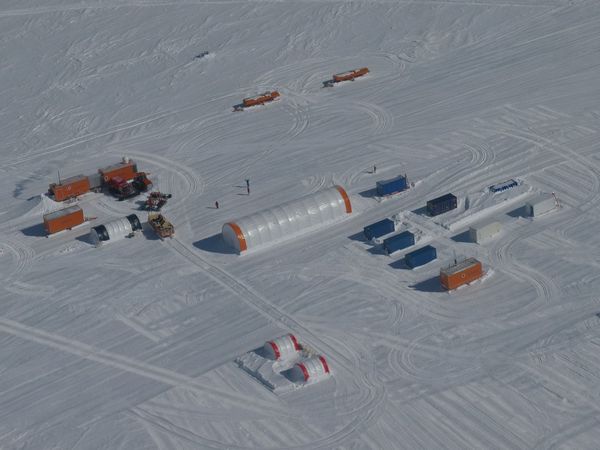The first ice core drilling campaign of Beyond Epica-Oldest Ice is starting at the South Pole, at the Little Dome C site. The aim of the campaign is to go back in time by 1.5 million years, thanks to the sampling and analysis of deep ice, which will reveal invaluable information on temperature and on the concentration of greenhouse gases in the atmosphere in the past. The campaign is an unprecedented effort in paleoclimatology.
The campaign, which started in 2019 and will last seven years, was financed by the European Commission with 11 million euros. It is coordinated by Carlo Barbante, Director of the Institute of Polar Sciences (ISP) of the Italian National Research Council and Professor at Ca’ Foscari University of Venice. The project involves twelve partner research centres in European and non-European countries. In Italy, the project is included in the PNRA (Italian National Antarctic Research Programme), financed by MUR and conducted under the scientific coordination of CNR and the logistic coordination of ENEA.
The campaign, which will last until January 2022, will be conducted in Little Dome C, an area of 10 km2 that is 40 km southeast of the Italian-French Concordia Station, on the eastern Antarctic plateau — one of the most extreme places on the Earth. Glaciologists, engineers and technicians of the international team will work at an altitude of 3,233 metres above sea level, over 1,000 km away from the coast, and at a temperature that during Antarctic summer will average -35°C.
Once the drilling site is fully operational, the drilling system will be tested while the team digs a storage site in the snow to host the first ice samples. The success of this campaign is crucial to the outcome of the entire project. There are two decisive moments for the history of climate science: first, the making of the hole from which the ice core will be extracted; second, the extraction of the first layers of ice. The team hopes to achieve an average perforation speed of 170 metres per week in January.
“During our previous Epica (European Project for Ice Coring in Antarctica) project, which ended in 2008, we managed to analyse an ice core that was 800,000 years old. Now we are trying to travel backwards in time even further: in fact, if we are to gain a correct perspective on what the world is currently experiencing with climate change, and adopt mitigating strategies, we must look back even further — which is what we are trying to do in Antarctica with Beyond Epica,” says Carlo Barbante, who is involved on site in the campaign.
Ice is shaped by the climate and environmental history of our planet, so it can reveal information on centuries and even millennia ago on the evolution of temperature and on the composition of the atmosphere. Researchers will therefore be able to establish the quantity of various greenhouse gases, such as methane and carbon dioxide, present in the atmosphere in various eras. Then, they will be able to link these findings with the evolution of temperature.
“We believe this ice core will give us information on the climate of the past and on the greenhouse gases that were in the atmosphere during the Mid-Pleistocene Transition (MPT), which happened between 900,000 and 1.2 million years ago,” says Barbante. “During this transition, climate periodicity between ice ages changed from 41,000 to 100,000 years: the reason why this happened is the mystery we hope to solve.”
The other scientists on site will be Thomas Stocker, Remo Walther, and Jakob Schwander from the University of Bern. The core barrel will be maneuvered by Philippe Possenti, Gregory Teste, Olivier Alemany, Romain Duphil of the University of Grenoble-Alpes, and Matthias Hueter of the Alfred Wegener Institute. Logistics and telecommunication will be managed by Michele Scalet, Saverio Panichi, Giacomo Bonanno of Enea and Calogero Monaco of the Genio Guastatori regiment.
Read on to learn more about Beyond EPICA Oldest Ice Core.











